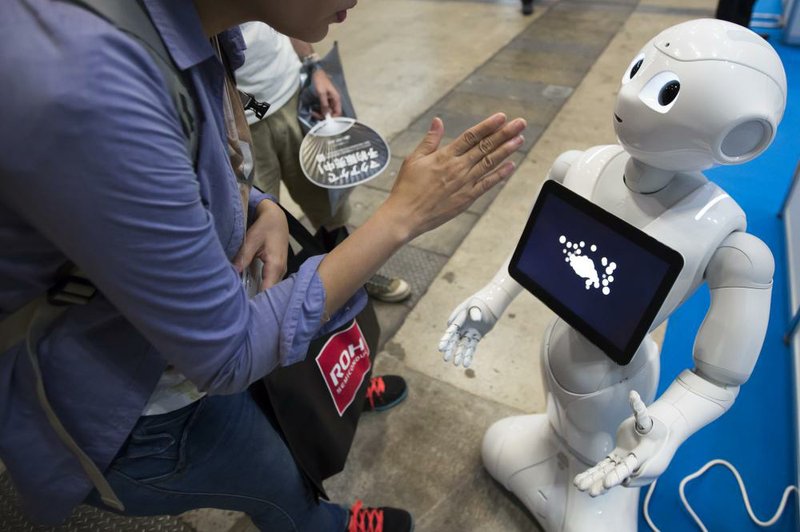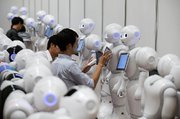NEW YORK -- As soon as customers approach Pepper, a 4-foot-tall robot, she starts sizing them up.
Thanks to facial recognition capabilities, Pepper can determine their gender and age bracket. And as they begin asking her questions, she can draw from a vast volume of cloud-based information to give what she thinks are relevant answers. If they smile, she can tell the conversation is going well and that they're finding her answers helpful. If they don't, she might ask them if she's misunderstanding their requests.
Pepper's maker, SoftBank Robotics, has a vision of a world in which many retailers incorporate this technology into brick-and-mortar stores, in which it feels normal and reflexive for customers to approach a robot with customer service questions.
It's part of a wider push across the retail industry to implement automation and data science to one of the few parts of the business that largely remains an art: The act of making a sale.
At the National Retail Federation's Big Show, an event in New York attended by tens of thousands of industry professionals, demonstrations abounded of technology that could assist a store employee in closing the deal -- or, in some cases, that could answer the very questions clerks might typically help with.
These innovations present tantalizing possibilities for retailers, who can ill afford to lose any opportunity to satisfy or even upsell a customer at a time when mall foot traffic is tumbling precipitously. But the advances also raise thorny questions about what the retail workforce of the future will look like if a growing array of tasks can soon be punted to robots or tablet applications.
Demonstrators offered several possible scenarios for Pepper: Retailers could position her at an "endcap" -- the eye-catching display at the head of an aisle -- or in a specialty department, where she could answer questions about a featured product. Or she could help you identify which shoes a customer might want to buy based on what their priorities are. On a budget? She'll steer a customer toward the cheapest pair. Like to be comfortable? She'll suggest a functional pair of sneakers.
After being used at SoftBank Mobile stores in Japan for several years, Pepper made her debut in the U.S. market in November, launching at two Westfield malls in California. In that iteration, she is programmed to do things like give shoppers directions to a certain store.
SoftBank says there is only one facility in the United States that is currently equipped to service and repair the robots, and the company doesn't want to deploy the technology too widely until it has built out more logistics and capacity for managing that.
Plus, they don't think they've come close yet to unlocking the full range of what Pepper is capable of, as software developers are still being unleashed to write programs for the technology.
Retailers may be more apt to get on the bandwagon when they can see more use cases. So might hotels, cruise ships, airports or other places that rely on customer service.
Pepper's makers stress that they don't see the technology as something that replaces human workers. Rather, they see it as a supplement. While Pepper is directing a person to the restroom, the theory goes, a sales associate can be handling complex tasks such as recommending shoes to go with a dress, or helping a customer find the last pair of jeans in their size.
The idea of technology as a support system for a sales clerk could be seen at other displays during the National Retail Federation's trade show. Toshiba, for example, showed off something it calls Lift 'n Learn.
When a shopper lifts an item off a shelf, it triggers more information about that product to come up on a large screen behind the display. But certain customer actions can also send a notification to a sales associate that someone is interacting with that display, providing an opportunity for an employee to swoop in, recommend related products, and so on.
There are other cases where a worker wouldn't have to step in at all.
Philips Lighting demonstrated a technology called visible light communications, in which store lighting can be used to pinpoint a customer's precise positioning and facing within an aisle of a store. A spokesman offered an example of how this might be used in a pharmacy for what he called "selective selling": If a customer is hovering around the flu medicine, the retailer's app could also nudge them to also buy tissues and cough drops.
SundayMonday Business on 01/23/2017

